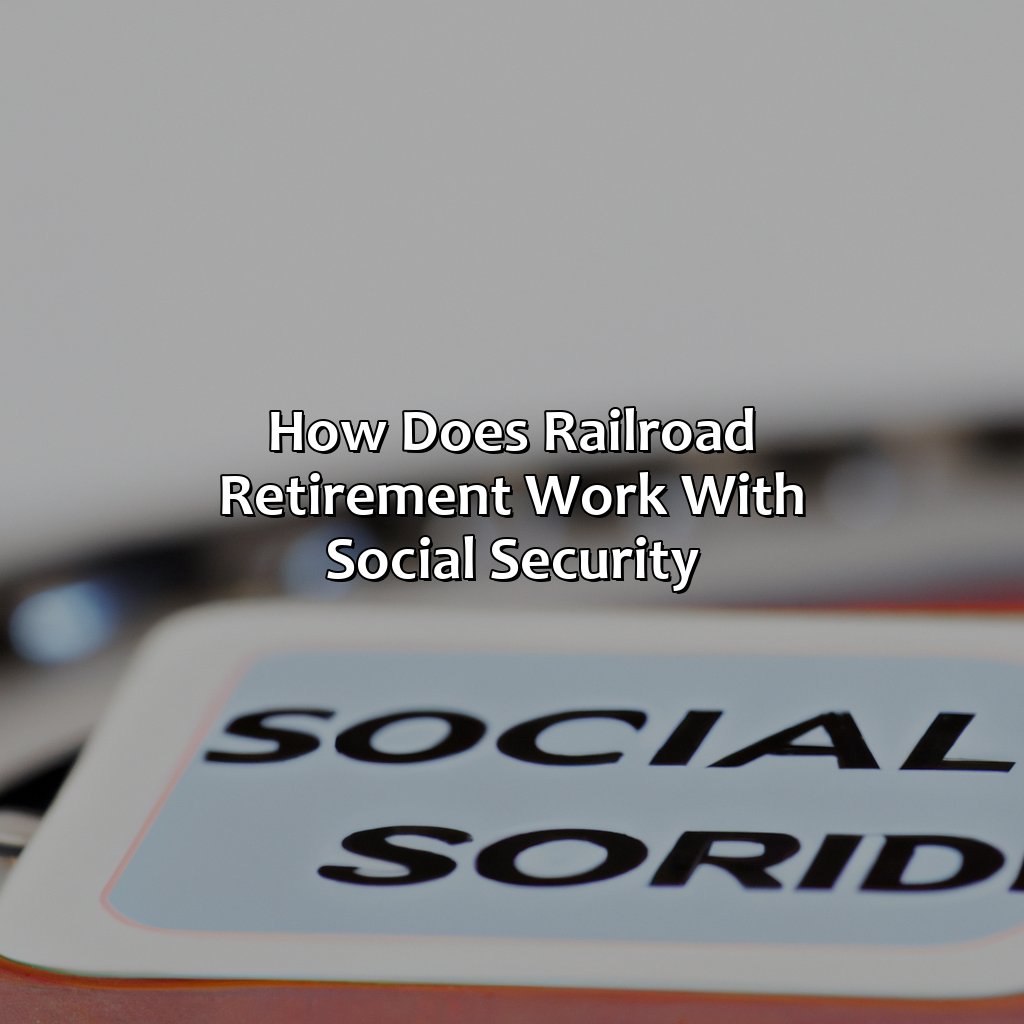How Does Railroad Retirement Work With Social Security?
Key Takeaway:
- Railroad Retirement and Social Security work together: While Railroad Retirement and Social Security are separate systems, they are designed to work together to provide retirement benefits to railroad workers. Railroad workers can receive benefits from both programs, and their benefits may be coordinated to maximize their overall retirement income.
- Calculating Railroad Retirement benefits is complex: Railroad Retirement benefits are calculated based on a complex formula that takes into account the worker’s years of service and earnings history. This can be particularly challenging for workers who switch between railroad employment and non-railroad employment during their careers.
- Railroad Retirement may affect Social Security benefits: Railroad Retirement benefits can affect a worker’s Social Security benefits, depending on their eligibility and amount of benefits received. In some cases, a worker’s Social Security benefits may be reduced to account for their Railroad Retirement benefits.
Are you a railroad worker thinking about retirement? Knowing how railroad retirement works together with Social Security can help maximize your benefits. Learn how to maximize your retirement options with this helpful guide.
Overview of Railroad Retirement and Social Security
The coordination of Railroad Retirement benefits with Social Security benefits ensures that railroad employees and their families receive appropriate retirement, survivor, and disability benefits. The rules and regulations governing the Railroad Retirement program are similar to those of Social Security, but there are some differences unique to Railroad Retirement.
The Railroad Retirement Board, which administers the Railroad Retirement program, works with the Social Security Administration to ensure that railroad employees receive the benefits they are entitled to. The benefits provided by Railroad Retirement and Social Security are based on the employee’s earnings history and the type of railroad work performed.
One unique feature of the Railroad Retirement program is that it provides vested dual benefits to employees who work both in the railroad industry and in non-railroad employment.
Pro Tip: Railroad employees who are eligible for both Railroad Retirement and Social Security benefits should carefully consider their options to maximize their benefit payments. They can contact the Railroad Retirement Board or a financial advisor for assistance in making informed decisions.
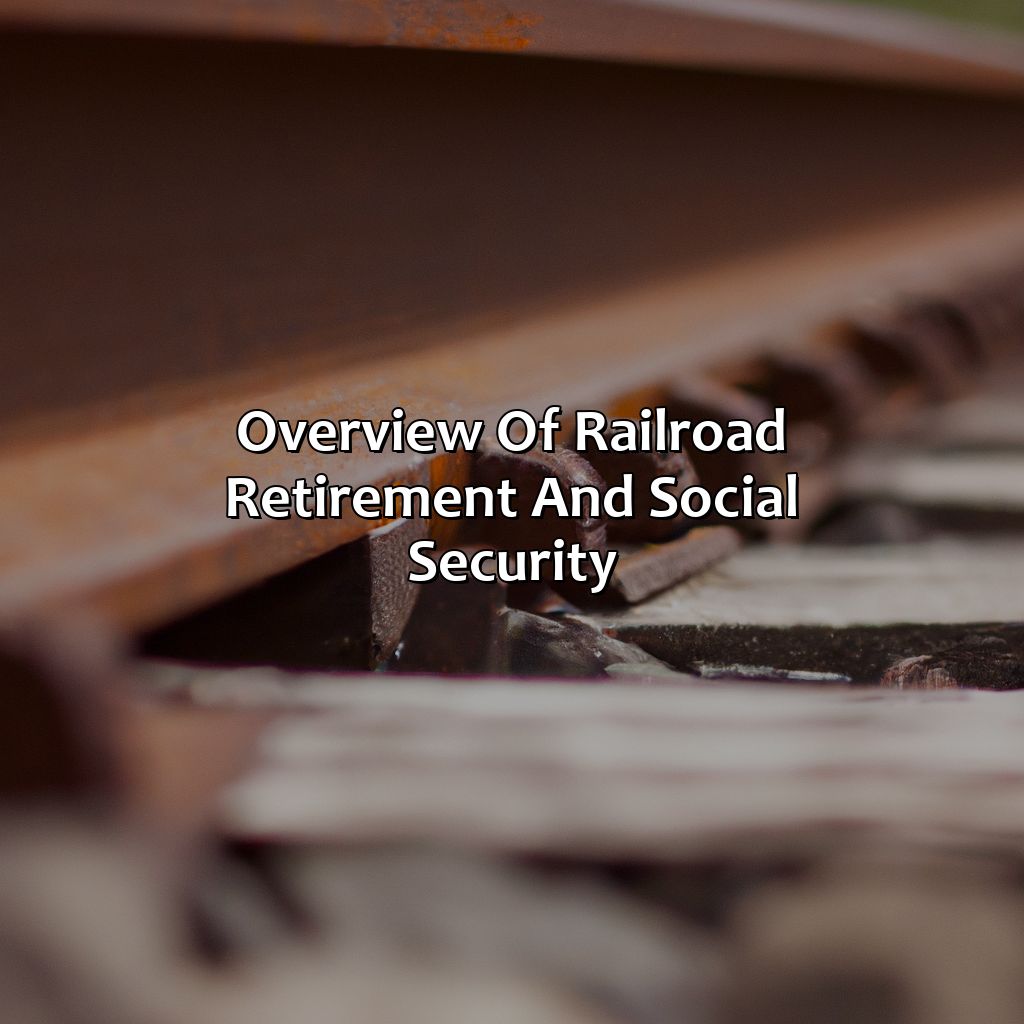
Image credits: retiregenz.com by Yuval Woodhock
How Railroad Retirement Benefits are Calculated
Do you want to know if you’re eligible for Railroad Retirement Benefits? And how they’re calculated? Look no further! Check out the sub-sections below. Uncover the factors that determine the amount of such benefits. Get a glimpse into the world of Railroad Retirement Benefits!
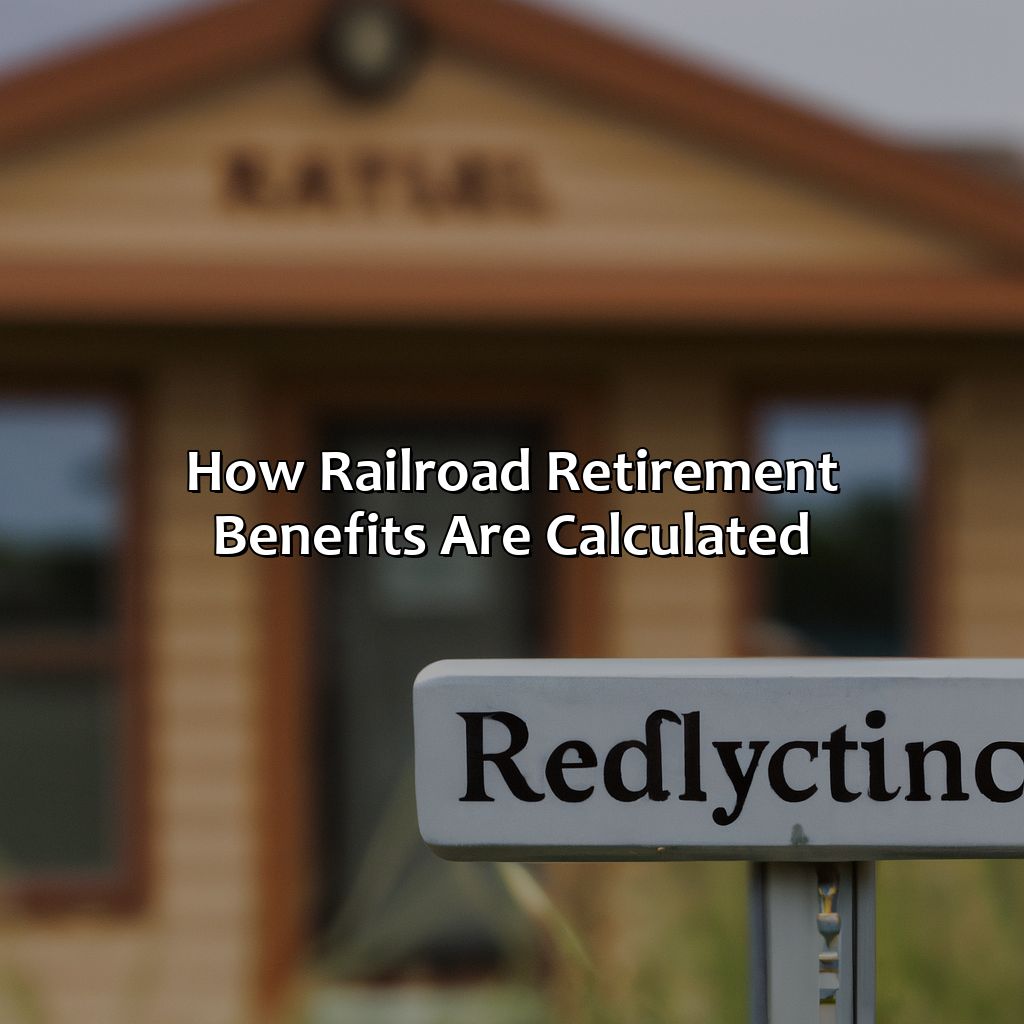
Image credits: retiregenz.com by Joel Washington
Eligibility for Railroad Retirement Benefits
To qualify for retirement benefits from the railroad industry, an individual must have worked in a railroad-related job for at least 10 years (or 120-month payment periods). If the work history also includes non-railroad employment, Social Security credits will be counted towards eligibility as well. Additionally, some eligibility requirements vary by job position and years of service.
An employee who has worked fewer than 30 years in the railroad industry may also qualify for disability or survivor benefits. Those who retire early before reaching full retirement age will have a reduced benefit amount. Railroad workers who fall under specific categories such as divorced spouses or children of deceased workers may also be eligible for benefits.
It is essential to note that employees contribute part of their income to the Railroad Retirement system, which is different from Social Security. The contributions made are placed into trusts and invested in government securities to fund future benefit payments.
A couple had been working in the railroad industry for over twenty-five years when one spouse passed away unexpectedly. They were unaware that they qualified for survivor benefits until a union representative pointed it out to them during the grieving process. Luckily, they were able to receive financial support during a difficult time thanks to their contribution to the Railroad Retirement system.
Why do math when you can just ride the rails and hope for a retirement miracle?
Calculating Railroad Retirement Benefits
Railroad Retirement Benefits are determined by various factors, including the employee’s years of railroad service and their earnings history. These benefits are calculated differently from Social Security benefits due to the unique nature of railroad work. Railroad employees may be eligible for both Railroad Retirement Benefits and Social Security, but they cannot receive full benefits from both at the same time.
The calculation process for Railroad Retirement Benefits takes into account several factors, such as average monthly earnings, years of service, and age at retirement. Additionally, certain types of railroad work may qualify for additional credits towards benefits.
Pro Tip: Consult with a financial advisor or the Railroad Retirement Board to fully understand your eligibility and benefit options.
Why choose between running off the tracks or jumping the turnstile when you can have both with Railroad Retirement and Social Security benefits?
How Railroad Retirement Affects Social Security Benefits
Want to know about Railroad Retirement and Social Security? We’ll dive into the coordination of benefits between the two. Also, Social Security benefits may be reduced due to Railroad Retirement – so we’ll cover that too!
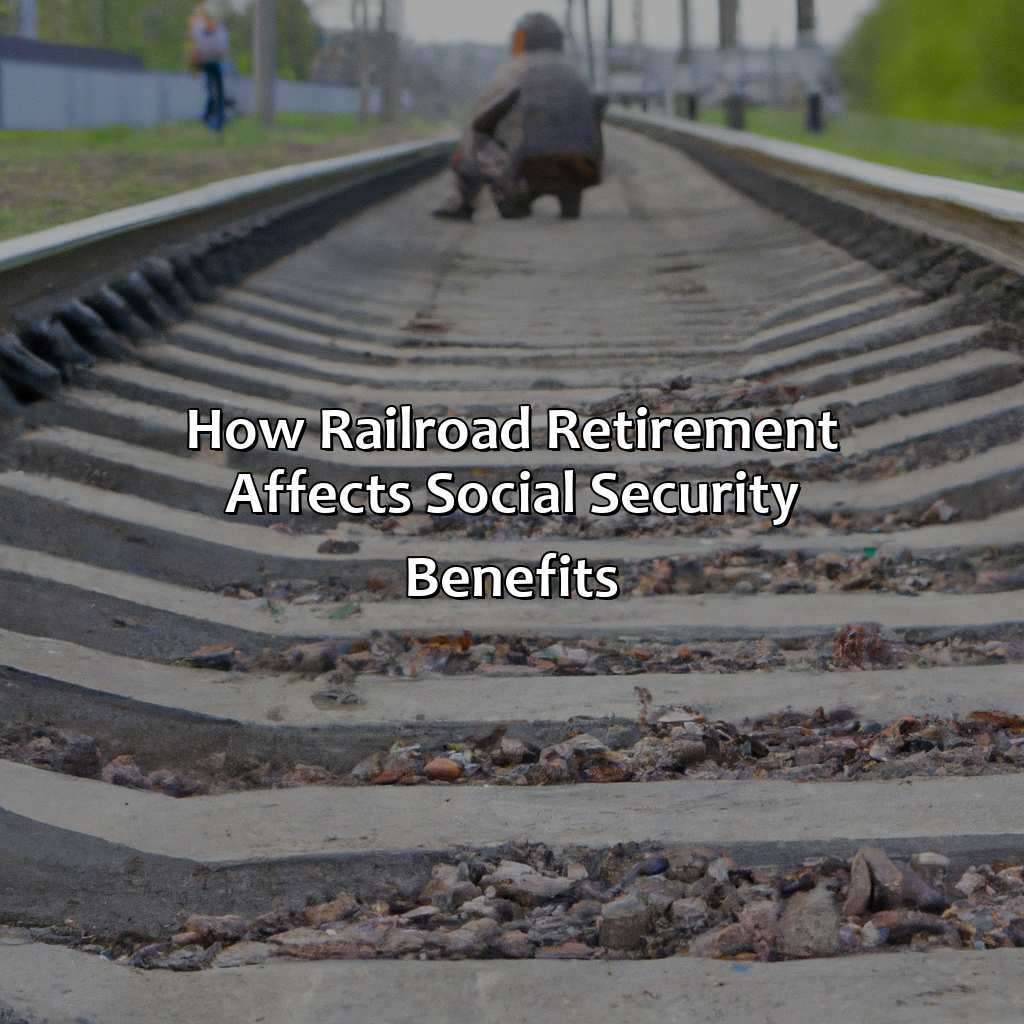
Image credits: retiregenz.com by Joel Jones
Coordination of Benefits Between Railroad Retirement and Social Security
The coordination of benefits between Railroad Retirement and Social Security enables eligible workers to receive both types of benefits simultaneously. Railroad retirement is a specific pension system for railroad employees, while Social Security is a more general pension program for all types of employees.
These benefits are coordinated through the Government Pension Offset (GPO) and the Windfall Elimination Provision (WEP), which may reduce the amount of Social Security benefits received by those who also receive railroad retirement benefits.
The GPO applies to spouses or surviving spouses who receive railroad retirement benefits but have not contributed enough to qualify for Social Security benefits. The WEP affects the amount of Social Security benefits received by individuals who spent part of their career working in a job that did not contribute to Social Security, such as Railroad employment.
It is important for individuals who are eligible for both Railroad Retirement and Social Security benefits to understand how these two systems work together to coordinate their pensions. Failing to do so could result in missed opportunities for additional retirement income.
To avoid confusion and ensure maximum benefit eligibility, it is recommended that individuals seek guidance from their respective plan administrators, financial advisors or benefit counselors. By doing so, they can optimize their overall financial well-being upon retirement.
What’s the difference between a train conductor and someone getting their Social Security benefits reduced due to railroad retirement? One gets to keep the whistle.
Reduction of Social Security Benefits for Railroad Retirement
The Railroad Retirement System can reduce Social Security benefits. This occurs when a worker has earned both Railroad and Social Security retirement credits. Once the worker retires, the Railroad Retirement Board coordinates with the Social Security Administration to determine what amount of their total railroad and social security earnings will receive a reduction. The reduction calculations are based on various factors, including age, years of service, and earnings history.
It is important to note that a dual benefit may not result in a total loss of Social Security payment for certain beneficiaries. Also, reductions in Social Security payments do not impact Railroad Retirement payments.
Interestingly, some former railroad employees might qualify for an annuity that is independent of their eligibility or non-eligibility for Social Security Benefits. If they have at least 30 years of service, they can receive an annuity which is calculated using their final days’ earnings as well as the number of years of credited service.
Pro Tip: Before making any decisions related to Railroad or Social Security benefits, it’s recommended to consult with financial advisors who specialize in these types of matters.
Get ready for a bureaucratic adventure as you navigate the application process for both Railroad Retirement and Social Security benefits.
Applying for Railroad Retirement and Social Security Benefits
Apply for railroad retirement and social security? Get the scoop! Here’s how.
- First, apply for Railroad Retirement Benefits.
- Then, apply for Social Security Benefits.
Both programs can be accessed simultaneously. Ready to get started? Check out our two sub-sections: Applying for Railroad Retirement Benefits and Applying for Social Security Benefits.
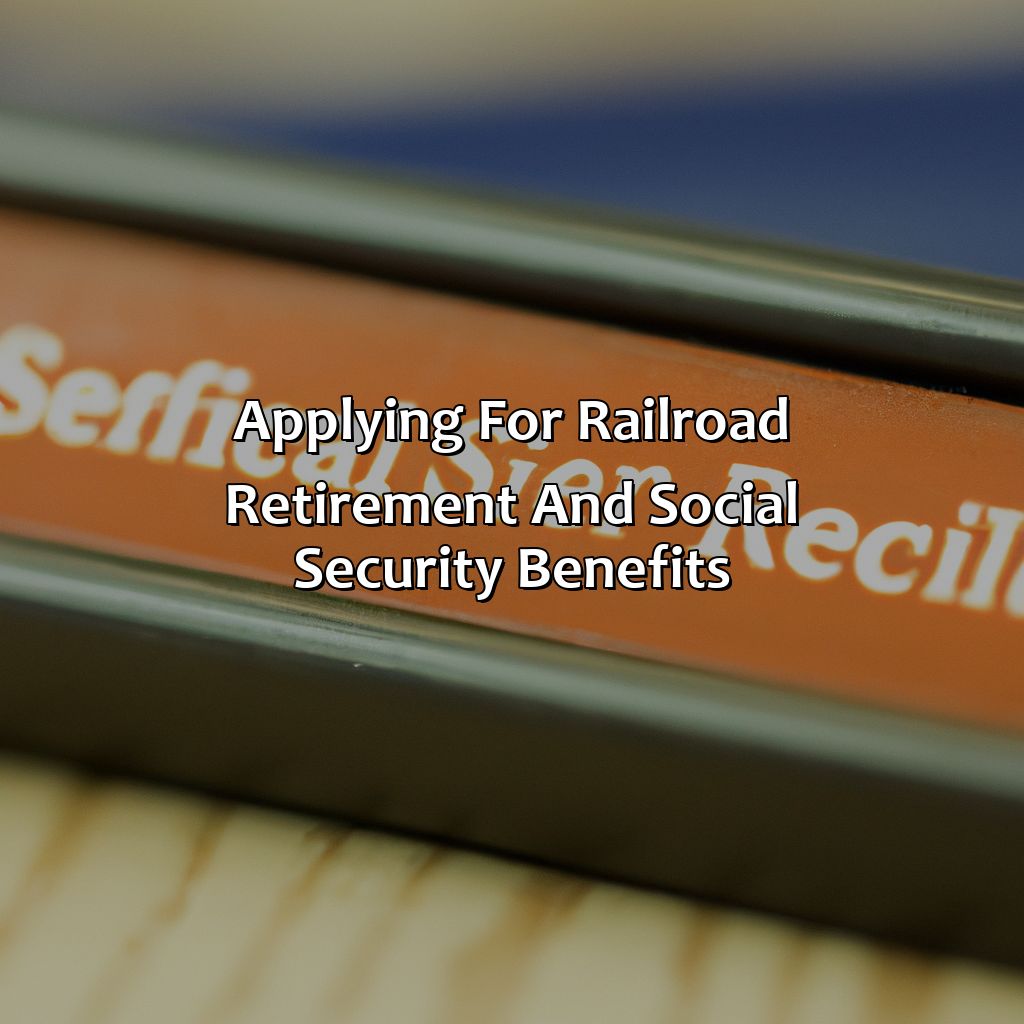
Image credits: retiregenz.com by Harry Arnold
Applying for Railroad Retirement Benefits
Railroad Retirement and Social Security Benefits are two significant retirement programs that offer financial security to American workers. Suppose you’re a railroad employee and are ready to retire. In that case, applying for Railroad Retirement benefits is straightforward and convenient, requiring minimal paperwork.
Here’s how to apply for Railroad Retirement Benefits:
- Visit your local Field Service Office to apply for Railroad Retirement Benefits
- Fill out the Application for Age Annuity form
- You’ll also need to submit supporting documents, such as proof of age, railroad service records, and work history.
- If you qualify for both Railroad Retirement and Social Security benefits, you will receive both.
Notably, it’s essential to ensure all required documents are accurate to avoid delays in receiving your benefits. Remember the longer you wait before filing an application after becoming eligible can affect the amount of back pay earned if approved.
When seeking more specific guidance on how to go about applying for these benefits or other issues related, visit the United States Railroad Retirement Board website or consult a seasoned Rail Labor attorney.
Applying for Social Security benefits is like waiting for a train on a platform with a broken clock – just when you think it’s on time, it’s already been delayed.
Applying for Social Security Benefits
Aspiring to Receive Social Security Benefits: How to Apply?
Applying for Social Security benefits can be a cumbersome task, and it’s crucial to follow the correct steps. Individuals who wish to apply need to start by visiting the official Social Security Administration (SSA) website or local office. They also need to understand their eligibility requirements and submit necessary documents, including citizenship proof, income statements, and more.
Once individuals have applied for social security benefits successfully, they have an opportunity to receive extra benefits through the Railroad Retirement program. It is essential to note that while individuals are eligible for both programs, they cannot receive full benefits from both programs simultaneously.
It’s important to examine your respective plans carefully before signing up for Railroad Retirement as some conditions may impact benefit amounts. The SSA typically deducts a specific amount from Railway Retirement payouts when these individuals are also qualified for other social security benefits.
Recently, an applicant learned he had been denied his social security benefits after his initial application due to insufficient proof of income. Fortunately, with professional assistance, he was able to obtain necessary documents and secure these benefits rightfully.
Some Facts About How Railroad Retirement Works with Social Security:
- ✅ Railroad Retirement benefits are separate from Social Security benefits, but many railroad workers are eligible for both. (Source: Social Security Administration)
- ✅ Railroad workers may be eligible for even higher benefits through the Railroad Retirement program, which takes into account their specific industry and work history. (Source: AARP)
- ✅ Railroad Retirement benefits are funded through payroll taxes paid by workers and employers in the railroad industry. (Source: Railroad Retirement Board)
- ✅ Railroad Retirement benefits may be reduced if the beneficiary also receives Social Security benefits. (Source: U.S. Government Publishing Office)
- ✅ Railroad workers must have at least 10 years of railroad service to be eligible for Railroad Retirement benefits, and the benefits increase with additional years of service. (Source: Railroad Retirement Board)
FAQs about How Does Railroad Retirement Work With Social Security?
How does railroad retirement work with social security?
Railroad retirement is a retirement program for railroad workers who have worked for an extended period. This program is separate from the Social Security program, but it is still interconnected with it. Below are some common questions and answers regarding how Railroad Retirement works with Social Security.
Is Railroad Retirement part of Social Security?
Railroad Retirement is a separate program from Social Security, but it is still connected to it. Railroad Retirement benefits are based on a different formula than Social Security benefits, and eligibility requirements differ. However, workers who are eligible for both programs can receive benefits from both.
Can I receive both Railroad Retirement and Social Security?
Yes, if you have worked both in the railroad industry and in other jobs covered by Social Security, you may be eligible to receive benefits from both programs. However, the total amount of benefits you receive from both programs cannot exceed certain limits.
How is the Railroad Retirement benefit calculated?
Railroad Retirement benefits are calculated based on a formula that considers your years of service, earnings, and age. Similar to Social Security, your benefit amount may be reduced or increased depending on when you choose to start receiving benefits.
Are Railroad Retirement benefits taxed like Social Security benefits?
Yes, Railroad Retirement benefits are taxed in a similar way to Social Security benefits. Depending on your income, up to 85% of your Railroad Retirement benefits may be taxable.
Can I apply for both Railroad Retirement and Social Security at the same time?
Yes, if you are eligible for benefits from both programs, you can apply for both benefits at the same time. However, you will need to provide specific information about your work history and earnings for both programs.
